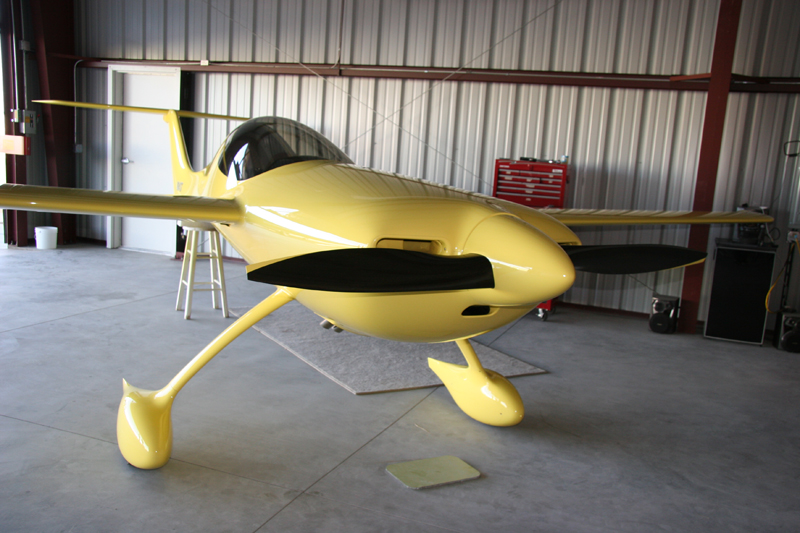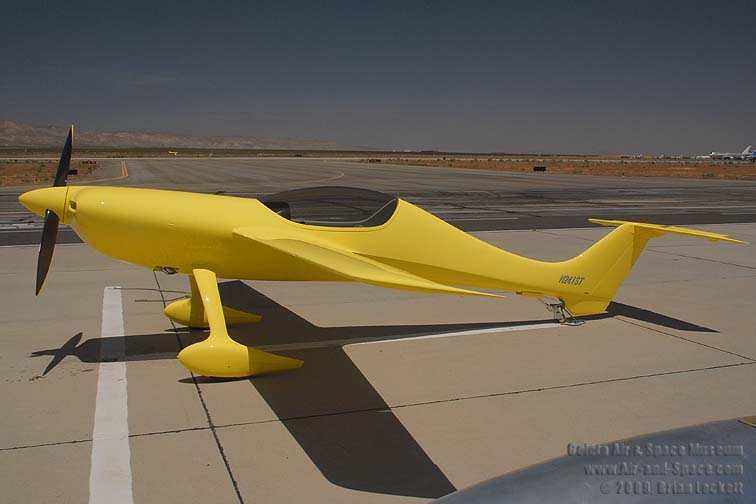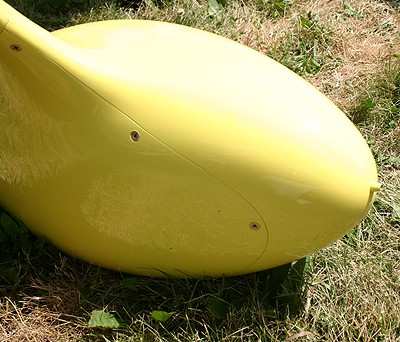gschuld
Well-Known Member
There are a whole bunch of planes out there that inspire me, and Cory Bird's former Oshkosh Grand Champion is one of them. For those who are not aware, Cory Bird is one of the main guys at Scaled Composites. Besides the concours quality finish(which could arguably be overdone on a practical level) and the flowing unique lines, I am impressed with the mountains of effort he put into making the airplane as "clean" as possible.
For example, note that there are no obvious external signs of fuel tank vents, fuel drains, a pitot tube, etc.



While reading through some of the articles written about the plane, I came across the following.
From here:
Sportsman Pilot Magazine- Article Library- Spring 2003
Cory built the composite landing gear over a particle board former. It's all S-2 glass and high temperature resin, with an overlap of carbon fiber to better resist torsional drag loads. Cleveland 5:00x5 wheels and brakes with low profile tires were used, and gear leg fairings were made for streamlining and enclosing the brake lines and fuel vent lines.
From here:
Aero-News Network: The Aviation and Aerospace World's Daily/Real-Time News and Information Service#
The large pitot tube found on most planes is replaced by a tiny opening on the nose of the left wheel pant.

And from here:
http://www.popsci.com/military-aviation-space/article/2004-01/tiny-perfect-little-flying-machine
The fuel-tank drains on the belly are what the industry calls flush drains, which generally have an eighth-inch protrusion beyond the skin of the airplane. An eighth inch too far for Cory Bird, who totally remachined the stock push-up drains and mounted them in bushings that are, well, flush.
(I couldn't find a picture of it.)
I can see the pitot tube in the picture above and I get the idea what the trimmed flush drains look like. But I haven't yet figured how he did his fuel vents. According to the Sportsmanpilot article: "...and gear leg fairings were made for streamlining and enclosing the brake lines and fuel vent lines." Cory Bird's plane has two fuel tanks mounted just outboard of the pilots leg position along the fuse sides between the seat front and the firewall. The gear legs appear to intersect the fuselage right under each fuel tank. I would assume that each tank has a fuel vent tube running down the gear leg under it. But I don't see and evidence of how the vent system works. I don't see any obvious vent openings on the wheel pant closeup picture. Any ideas?
Any thoughts as to the practicality of any of these concepts for use on other planes. I am all for keeping drag to a minimum and keeping everything as clean as possible, but not at the sacrifice of a healthy degree of function and safety. For example, I wonder how accurate his pitot tube is considering it only seems to protrude about 3/8" or so infront of the wheel pant:lick:.
That plane is a whole bunch of food for thought....
George
For example, note that there are no obvious external signs of fuel tank vents, fuel drains, a pitot tube, etc.



While reading through some of the articles written about the plane, I came across the following.
From here:
Sportsman Pilot Magazine- Article Library- Spring 2003
Cory built the composite landing gear over a particle board former. It's all S-2 glass and high temperature resin, with an overlap of carbon fiber to better resist torsional drag loads. Cleveland 5:00x5 wheels and brakes with low profile tires were used, and gear leg fairings were made for streamlining and enclosing the brake lines and fuel vent lines.
From here:
Aero-News Network: The Aviation and Aerospace World's Daily/Real-Time News and Information Service#
The large pitot tube found on most planes is replaced by a tiny opening on the nose of the left wheel pant.

And from here:
http://www.popsci.com/military-aviation-space/article/2004-01/tiny-perfect-little-flying-machine
The fuel-tank drains on the belly are what the industry calls flush drains, which generally have an eighth-inch protrusion beyond the skin of the airplane. An eighth inch too far for Cory Bird, who totally remachined the stock push-up drains and mounted them in bushings that are, well, flush.
(I couldn't find a picture of it.)
I can see the pitot tube in the picture above and I get the idea what the trimmed flush drains look like. But I haven't yet figured how he did his fuel vents. According to the Sportsmanpilot article: "...and gear leg fairings were made for streamlining and enclosing the brake lines and fuel vent lines." Cory Bird's plane has two fuel tanks mounted just outboard of the pilots leg position along the fuse sides between the seat front and the firewall. The gear legs appear to intersect the fuselage right under each fuel tank. I would assume that each tank has a fuel vent tube running down the gear leg under it. But I don't see and evidence of how the vent system works. I don't see any obvious vent openings on the wheel pant closeup picture. Any ideas?
Any thoughts as to the practicality of any of these concepts for use on other planes. I am all for keeping drag to a minimum and keeping everything as clean as possible, but not at the sacrifice of a healthy degree of function and safety. For example, I wonder how accurate his pitot tube is considering it only seems to protrude about 3/8" or so infront of the wheel pant:lick:.
That plane is a whole bunch of food for thought....
George




